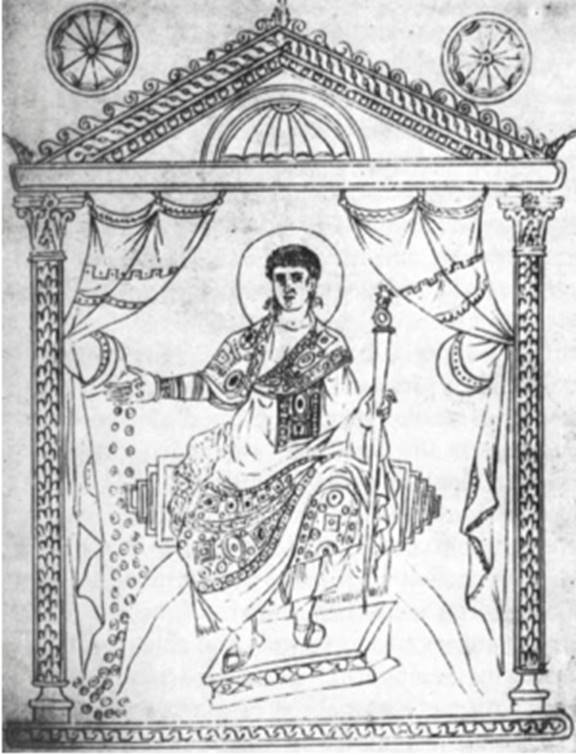Drawings of the Calendar of 354. Paris, 1620-1629. Parchment
Twenty-three drawings reproduce pages from a calendar codex compiled for a.d. 354. The date is deduced from circumstantial evidence in the Natales Caesarum and from the lists of prefects and consuls of Rome up to 354 appended to the calendar. It belongs to a group of copies—most of them from the fifteenth and sixteenth centuries —based on an intermediary Carolingian copy of the original. Several pages from this same copy are part of another manuscript in the Vatican Library, cod. lat. 9135. Because none of the extant copies is complete, only through collation and analysis of them all can a full reconstruction be made (Stern, 1953, pp. 14-20).

The pages in this manuscript are: fol. 1, title page with dedicatory inscriptions to Valentinus; fols. 2-5, personifications of four great cities of the empire: Rome, Alexandria, Constantinople, and Trier; fol. 6, an imperial dedication, salvis avgvstis felix valentinvs, on a shield held by a Victory and an eagle; fol. 7, the Natales Caesarum (birth and accession dates); fols. 8-12, five of the original seven personifications of planets: Saturn, Mars, Mercury, Sol, Luna; fols. 13—14, representations of the two consuls for the year 354, Constantius II and the Caesar Gallus; fol. 15, six medallions with zodiac signs; fols. 17-23, personifications of the months February, March, and August through December.
Valentinus, the recipient, must have been of aristocratic rank, judging by the profuse illustrations and large decorated pages. The inscriptions invoking Valentinus' happiness, joy, prosperity, and health suggest it was a New Year's gift. The scribe, Furius Dionisius Filocalus, Who signed his name on the title page, was an outstanding calligrapher in the time of Pope Damascus (366-384). This is his earliest known work.
The imagery blends traditional and recently invented iconographical types. The representations of Trier and Constantinople as imperial capitals date the work to no earlier than the Con- stantinian house. The planets and zodiac signs are traditional types, while the months, combined with various seasonal and temporal symbols, are new, complex variations of older conventions. The two imperial figures, originally facing each other in the codex, are nimbed, carry the consul's staff, and appear in curtained aediculae derived from theater architecture (Weitzmann, 1965, pp. 269-271). The seated Constantius II distributes coins to the public (cf. largitio on the Arch of Constantine, no. 58), and Gallus, with a sack of gold at his feet, holds out a victoriola, which, in turn, extends a crown to the Augustus, linking the two consuls into an impressive double-page unit. The ornate and fanciful architectural frames used thoughout the manuscript serve not only to contain the heterogeneous images within or support the calendrical data, but also to emphasize each page as an independent unit, suitable for individual artistic treatment.
The original Calendar of 354 is the only manuscript that can definitely be dated in the fourth century. Its invocations, illustrations, historical and festal notices—secular, Christian, and imperial—attest to the blending of these elements at a high social and intellectual level (cf. no. 386). It demonstrates the persistence of a "papyrus style" of ink drawings in the codex format, but, more importantly, shows the extent to which illustrators had developed the book miniature into a unit of commanding interest.
These copies were executed in France for the great antiquarian Nicolas-Claude Fabri de Peiresc (1580-1637). Sent to Cardinal Girolamo Aleandro in Rome; subsequently in the Barberini collection, and since 1902 in the Vatican Library. Bibliography: Strzygowski, 1888; Stern, 1953; Weitzmann, 1965, pp. 264—271.
Date added: 2025-07-10; views: 52;
